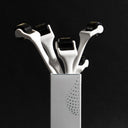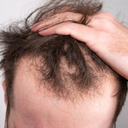Minoxidil is a popular treatment for hair loss, commonly used by both men and women to promote hair regrowth. While many users find success with this medication, there are questions surrounding the long-term effects of discontinuing its use. In this article, we will explore what happens if you stop using minoxidil, shedding light on the potential consequences and offering guidance for those considering stopping treatment.
Table of content
What happens if I stop using minoxidil?
If you stop using minoxidil, you can expect to lose the hair you gained while using the medication, and you may also experience accelerated hair loss that mimics the natural progression of hair thinning or balding. This process typically starts within a few months after discontinuation. Most users will begin to notice shedding of the newly regrown hair, and by the 3 to 6-month mark, they may revert to their baseline hair condition, which is often less than what they had achieved with minoxidil.
The main reason for this hair loss is that minoxidil works by stimulating hair follicles and prolonging the growth phase of hair (anagen phase). When you stop using it, the follicles return to their normal cycle, which can result in the loss of both the new hair and existing hair that was maintained by the medication. This is often referred to as "minoxidil shedding."
Moreover, the effects of minoxidil are not permanent. It is essential to understand that minoxidil does not cure hair loss; instead, it manages the symptoms. The underlying condition that causes hair thinning or loss, such as androgenetic alopecia (male or female pattern baldness), continues to progress even while using the treatment. Therefore, stopping minoxidil leads to the resumption of hair loss associated with your genetic predisposition.
As your leading source for hair health information over the past 4 years, we never compromise on accuracy. When it comes to your health, you deserve information you can truly rely on - and earning your trust is our top priority.
Here's how Scandinavian Biolabs ensures every piece of content meets the highest standards of accuracy and integrity:
- Credentialed Experts: Our reviewers are actively practicing doctors and medical researchers
- Stringent Reviews: Content undergoes rigorous editing by subject specialists and review by a practicing doctor.
- Evidence-Based: We rely on well-established research from trusted scientific sources like peer-reviewed journals and health authorities.
- Full Transparency: Our editorial standards, writer credentials, reviewer credentials, correction process, and funding are all publicly documented.
- Independent Voice: While we do promote products, we operate in a vacuum to business operations. Our main goal is just an unwavering commitment to providing medically-sound guidance.
You can count on Scandinavian Biolabs to consistently deliver the trustworthy health information you deserve. Read our Editorial Standards.
Understanding the Timeline of Hair Loss After Discontinuation
When you stop using minoxidil, the timeline for the return of hair loss can vary among individuals. Generally, the following phases can be expected:
- Weeks 1-4: Many users may not notice significant changes immediately. However, some might experience initial shedding as the hair follicles begin to respond to the lack of stimulation.
- Months 1-3: Hair shedding typically becomes more pronounced during this period. Individuals may notice that the hair they had regrown while using minoxidil starts to thin and fall out.
- Months 3-6: By this time, most users will experience a noticeable decline in hair density. The hair may appear thinner, and balding areas may become more prominent as the body returns to its pre-treatment state.
- 6 months and beyond: The hair loss process may stabilize after about six months, but the hair condition will likely be similar to what it was before starting minoxidil, which may be significantly thinner or sparser.
Potential Side Effects of Discontinuation
In addition to hair loss, you may also experience other side effects when stopping minoxidil, particularly if you have been using it for an extended period. Some users report:
- Scalp Irritation: Discontinuing the use of topical minoxidil can lead to scalp dryness or irritation as the skin adjusts to the absence of the medication.
- Change in Hair Texture: Some individuals may notice a change in hair texture, with hair becoming coarse or brittle as the follicles transition back to their natural state.
- Emotional Impact: Hair loss can be a significant emotional burden for many people. The sudden change in appearance can lead to feelings of anxiety or decreased self-esteem.
Is There a Way to Safely Discontinue Minoxidil?
If you are considering stopping minoxidil, it is crucial to consult with a healthcare professional or a dermatologist. They can provide personalized advice based on your specific situation. In some cases, they may recommend:
- Tapering Off: Gradually reducing the frequency of application (e.g., reducing to every other day) instead of stopping abruptly may help mitigate shedding.
- Alternative Treatments: Exploring other hair loss treatments, such as finasteride or low-level laser therapy, can be beneficial in maintaining hair density post-minoxidil.
- Support Groups: Joining a support group or seeking counseling can help address emotional impacts associated with hair loss.
Conclusion
Deciding to stop using minoxidil is a significant choice that can lead to various outcomes, primarily hair loss and changes in hair health. Understanding the effects of discontinuation and preparing for the potential consequences can help individuals manage their expectations. Consulting with a healthcare provider can provide guidance and support in making this transition. Ultimately, staying informed and proactive about your hair health is key to making the best decisions for your long-term well-being.
```Minoxidil Side Effects Got You Down? There's A Plant-Based, Drug-Free Option.
Minoxidil can be a double-edged sword for hair regrowth. It works, but often comes with scalp irritation and unwanted hair growth. Maybe you'd prefer a gentler approach altogether?
The good news is, effective alternatives exist. Many simply aren't aware of them.
Here's what you likely crave:
- Soothe the Scalp: Ditch the itch and irritation.
- See Real Results: Noticeable hair regrowth, not just less shedding.
- Safe for Everyday Use: A trusted product you can rely on.
Bio-Pilixin® to the Rescue
Bio-Pilixin® is a clinically tested, drug-free answer to your hair loss woes.
- Gentle Yet Effective: Powerful results without harsh chemicals.
- Help Reduce Shedding, Increase Growth: Studies show significant hair regrowth for users.
- Safe & Plant-powered Formula: Confidence you can use Bio-Pilixin® daily.
Bio-Pilixin® offers the powerful, yet gentle approach you've been searching for.
Read more:






